#kuichiro
Explore tagged Tumblr posts
Text
my kny oc x canon nicknames for each other
KUICHIRO:

(Drawn by kyuwmone on insta)
MUICHIRO TO KEIGETSU:
Keigetsu
My star
Kei
Lovely
KEIGETSU TO MUICHIRO:
Muichiro
Mui
Silly
-----
OBAZUMI:

OBANAI TO HIZUMI:
Kochiya
Hizumi
Hizu
My love
My sukanku
HIZUMI TO OBANAI:
Iguro
Obanai
Oba
My love
#➜☁︎❝𝐤𝐧𝐲❞ꜝꜝ#➜‹𝟹❝𝐚𝐧𝐢𝗺𝐞❞ꜝꜝ#➜✿❝𝗼𝐜 𝐬𝐭𝐮𝐟𝐟❞ꜝꜝ#demon slayer#kny#kimetsu no yaiba#kny oc#kimetsu no yaiba oc#demon slayer oc#oc x canon#keigetsu hayashi#hizumi kochiya#kuichiro#obazumi
1 note
·
View note
Text
Godzilla Storyboard — Toho Magazine 1954: Página 16-17

世紀の怪物!「ゴジラ」東宝キヌタ撮影所を急襲! The Monster of the Century! “Godzilla” Raids Toho Kinuta Studios! 太平洋の深海に眠っていた二百万年も前の両棲類、丸ビルほどもある大怪物が水爆の実験で海面に浮び上り、日本本土に上陸してくるといふ空前の空想科学映画だ。このゴジラたるや海上自衛隊をまず品川沖で叩きつぶし、戦車も重砲弾もはじき飛ばすといふすさまじさ。放射能の火炎を吐きならしながら至る所荒れ廻るといふ構想なので、そのスペクタクル場面の撮影には今、日本映画界に誇る東宝特殊技術陣が総動員で大汗をかいている。An amphibian sleeping in the deep sea of the Pacific two million years ago, a huge monster as large as Maru Building, rises to the surface of the sea due to a hydrogen bomb test and lands on the mainland of Japan in this unprecedented science fiction film. This Godzilla first crushes the Maritime Self-Defense Force off the coast of Shinagawa, and is frightening enough to fend off tanks and heavy artillery shells. The idea is to roam everywhere while spitting out radioactive flames, so for the filming of that spectacle scene, Toho’s special technical team, which is the pride of the Japanese film industry, is sweating profusely. ゴジラそのものは記録にのこるジュラ紀や白亜紀に棲息したという恐龍やブロントサウルスの形を綜合、それに海棲類から陸上獣類に進化しつつある動物といふ条件をつけて創造したのも。実際の製作にはプラスティックを使用して、小道具係が当つたものだが、このゴジラを動かす俳優はこの暑さにプラスティックのぬいぐるみにすっぽり入るわけだからこのかくれたる主演者こそ並大抵の仕事ではあるまい。Godzilla itself was created by combining the forms of dinosaurs and brontosaurus, which are said to have lived in the Jurassic and Cretaceous periods, which are recorded in the records, and adding the condition that it is an animal that is evolving from marine to terrestrial mammals. In the actual production, plastic was used, and the props were hit, but the actor who moves this Godzilla fits into a stuffed plastic costume in the heat, so this hidden star must be no ordinary job. ★ スタッフ ★ Staff 製作 Produced by … 田中 友幸 Tomoyuki Tanaka 原作 Original work … 香山 滋 Shigeru Kayama 脚本 Screenplay … 村田 武雄 Takeo Murata 監督 Director … 玉井 正夫 Masao Tamai 特影 Special effects … 山田 一夫 Kazuo Yamada 美術 Art Director … 中古 智 Satoshi Chuko 特殊技術 SPX … 円谷 英二 Akira Watanabe 渡辺 明 Akira Watanabe 向山宏 Hiroshi Mukaiyama 録音 Recording … 岸田九一郎 Kuichiro Kishida ★ キャスト ★ Cast 山根恭平 Kyohei Yamane … 志村喬 Takashi Shimura 山根 惠美子 Emiko Yamane … 河内子 Kawachiko 尾形秀人 Ogata Hideto … 宝田明 Takarada Akira 芹沢大助 Daisuke Serizawa … 平田昭彦 Akihiko Hirata 萩原 Hagiwara … 堺左千�� Sachio Sakai 田畑博士 Dr. Tanabe … 村上冬樹 Fuyuki Murakami 船舶会社々長 Head of shipping companies … 小川虎之助 Toranosuke Ogawa 老漁夫 Old fisherman … 高堂国典 Kokuten Kodo
0 notes
Photo

Pine Trees, Photo by Konami Kuichiro
135 notes
·
View notes
Photo
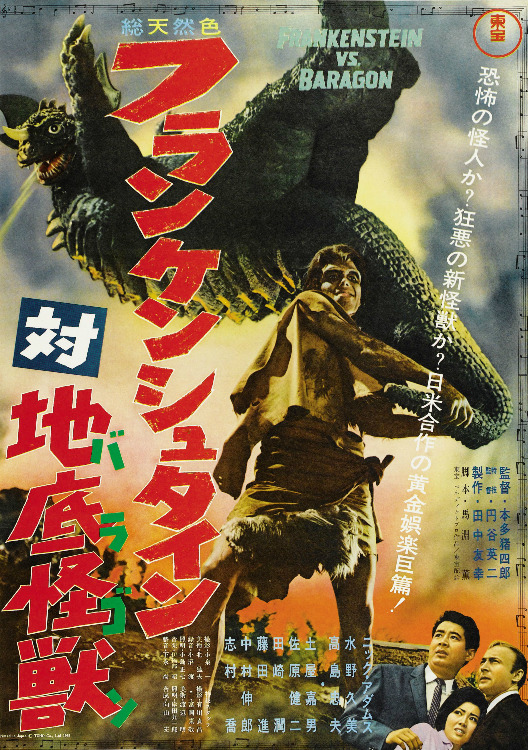


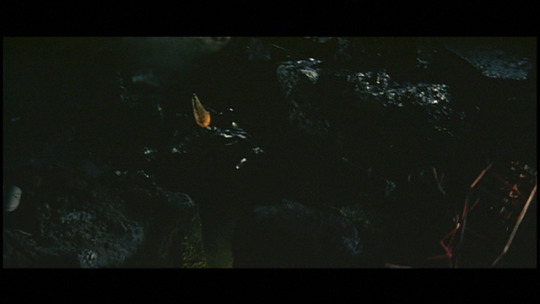


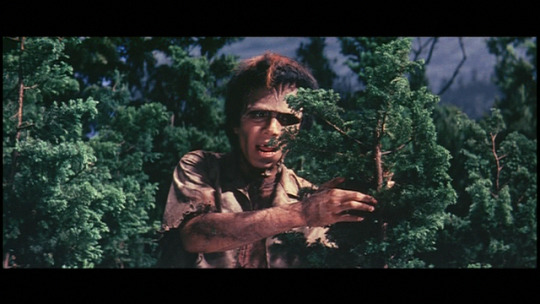

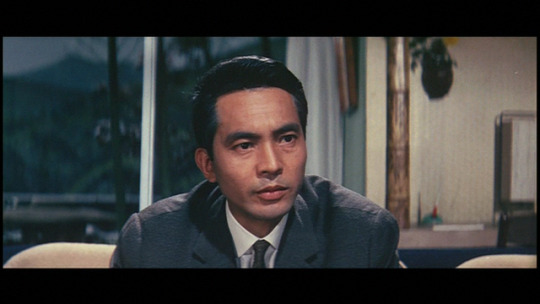
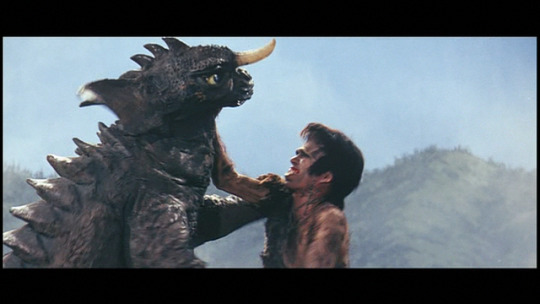
FRANKENSTEIN CONQUERS THE WORLD (1965)
At the tail end of World War II, the heart of the Frankenstein Monster is smuggled out of Germany by the Nazis. Taken to Japan in order to be studied, its experimentation is cut short by the bombing of Hiroshima. Several years later, scientists Dr. Bowen (Nick Adams), Sueko (Kumi Mizuno), and Kawaji (Tadao Takashima) work night and day in their clinic, tending to patients dying from radiation sickness. Sueko and Bowen encounter a young boy (Kenichiro Kawaji) desperate for food, even killing animals for it, and soon bring him to their clinic for further study. At the same time, a large, ravenous reptile known as Baragon surfaces from deep within the earth, devouring humans every chance it gets. A discussion with a German scientist convinces Kawaji that the boy is in fact the reincarnation of the Frankenstein Monster, only for an episode with some overzealous reporters resulting in the boy - now an immense size - escaping the clinic. Unfortunately, as Baragon eats more and more people, his carnage is blamed on Frankenstein. As Bowen, Sueko, and Kawaji try to convince the military that Frankenstein is innocent, the two monsters unknowingly head for a final showdown.
The second of Toho's collaborations with American producer Henry G. Saperstein, Frankenstein Conquers the World answers the question "What if the Frankenstein Monster got mutated into an even bigger monster?" The film opens with a great sequence set during World War II. This opening bit has some really nice atmosphere that sadly isn't carried over throughout the rest of the film. What's interesting is that this opening and some of the later dialogue ("Frankenstein was actually murdered many times...") suggest that this could loosely (very loosely) follow the Universal films. Eiji Tsuburaya's special effects are top notch, as always, and Akira Ifukube provides yet another memorable score (some of which was later reused for Godzilla vs. Gigan). Of course, one interesting bit of trivia concerning this film is that it was initially planned to be a far different movie. Instead of simply being a Frankenstein film with another monster for him to defeat and save the day from, the movie was originally going to continue the tradition started by King Kong vs. Godzilla and pit the immortal Monster against the King of the Monsters himself! At this point, however, Godzilla had already begun his transition from villain to hero with Ghidrah the Three-Headed Monster and Monster Zero, and thus his role as the antagonist that Frankenstein must overcome no longer made any sense, thus necessitating the creation of Baragon. Portrayed by Toho suitmation veteran Haruo Nakajima, Baragon is a fun monster to watch, his large, frill-like ears flopping about as he leaves a trail of carnage in his wake. Unlike Godzilla, Rodan, Varan, and other previous giant monsters, Baragon isn't given a backstory or origin to tell us where he came from, he's just a huge prehistoric reptile that shows up one day, using his fiery heat ray to help blast away rock and earth as he tunnels around Japan. Baragon would prove to be an extremely popular creation of Toho's, returning in Destroy All Monsters and, decades later, Godzilla Mothra King Ghidorah: Giant Monsters All-Out Attack.
But of course, the star of the show is Frankenstein. Portrayed mainly by Koji Furuhata, this incarnation of the Monster is a different sort of kaiju for Toho, an oversized man rather than a giant reptile or insect. As a portrayal of Mary Shelley's famous creation, Toho's Frankenstein Monster is - while ultimately effective - a mixed bag. While Eiji Tsuburaya faithfully recreates Jack Pierce's iconic raised forehead, Furuhata is a noticeably thin man, resulting in a rather scrawny Frankenstein. Honestly, there are times where one may forget this is intended to be the Frankenstein Monster and not just some giant caveman type being. That being said, Furuhata plays Frankenstein well, eliciting just the right amount of sympathy while still keeping the Monster very much a threat. Unfortunately, Frankenstein turns out to be too much of a threat by the time he fights Baragon. Instead of the heroic Frankenstein struggling to overcome and defeat the vicious, man eating monstrosity, he quickly begins to overpower and out think Baragon from the very beginning until he finally kills him. While yes, Frankenstein has always been known as a very strong character, there's nothing tense or rewarding about watching the hero effortlessly beat the tar out of the villain for fifteen minutes, making for an admittedly entertaining, though not entirely satisfying final battle. Oddly, Frankenstein has a notable lack of an exact origin in this film. While he clearly comes from the heart of the Monster at the start of the movie, it's never really said if the creature we follow throughout the film is an entirely new body generated by the heart, or if he is a starving street urchin having been mutated by eating it, or what. It ultimately doesn't affect the film, but it's strange when the character is usually so specific in its science and origins ("We dug up body parts, then sewed them together, then gave it a brain, then used lightning to bring it to life, then gave it a new brain, etc." vs. "It was the heart somehow maybe").
For the cast, the winning duo of Nick Adams and Kumi Mizuno return as the leads. And while Glenn and Miss Namikawa are clearly the more iconic couple played by the two (and rightfully so), their chemistry really shines here as the two are allowed to play more of a traditional couple as opposed to literally star crossed lovers who don't even share too many scenes together. The two have some really nice moments together, especially the dinners they have in each other's native culture. It's a nice little touch that one might not even notice at first. It's also nice that, unlike most other scientists in Frankenstein movies, Dr. Bowen never goes crazy and tries to use Frankenstein for his own ends. That honor, kind of, goes to Tadao Takashima as Dr. Kawaji. Kawaji is vastly uneven compared to Bowen and Sueko, at first insisting that Frankenstein is just as human as the next person, deserving better than being held in a zoo and being treated like a science experiment. But then, when discussing the Monster's origins with Dr. Liesendorf (a delightfully over the top Peter Mann, whose dub voice sounds like Kenneth Mars in Young Frankenstein), he quickly decides that the boy should be immediately hacked apart and studied. Kawaji later eases up on this train of thought, only to then decide that he should be the one to kill Frankenstein by throwing bombs into his eyes! Going from one to the other would be one thing, but the continuous back and forth is a little ridiculous. Also odd is the fact that Kawaji survives the film, when any other Frankenstein movie would have killed him off.
The film is also known for its original, unused ending, in which Frankenstein encounters Toho's infamous Giant Octopus after slaying Baragon. The Octopus attacks Frankenstein, who does well at first, only to become ensnared by the animal's tentacles, then dragged into a nearby lake, where he drowns and is presumably eaten. It's a fun enough scene, but comes completely out of left field, as the Octopus had clearly not been foreshadowed in any way prior to it simply popping up in the middle of the mountains.
Frankenstein would be the last American creation to receive his own Toho film, but he nevertheless left a strong mark on Toho's legacy which continues to be felt to this day, even more so than King Kong. As previously mentioned, Baragon would go on to become one of the more popular characters within the Godzilla franchise, while the semi-sequel to this film, War of the Gargantuas, remains one of Toho's most popular kaiju films to date, especially among their non-Godzilla films.
Rating: ★★★ ½
Cast: Nick Adams ... Dr. James Bowen Kumi Mizuno ... Dr. Sueko Togami Tadao Takashima ... Dr. Yuzo Kawaji Yoshio Tsuchiya ... Kawai Peter Mann ... Dr. Liesendorf Jun Tazaki ... Military Advisor Takashi Shimura ... Axis Scientist Koji Furuhata ... Frankenstein Kenichiro Kawaji ... Frankenstein (Juvenile) Haruo Nakajima ... Baragon (uncredited)
A.K.A.: Frankenstein vs. Baragon. Director: Ishiro Honda. Producer: Tomoyuki Tanaka, Reuben Bercovitch (executive producer), Henry G. Saperstein (executive producer), Samuel Arkoff (executive producer), and James H. Nicholson (executive producer). Writer: Takeshi Kimura, Reuben Bercovitch, Jerry Sohl, and Mary Shelley (original "Frankenstein" novel). Music: Akira Ifukube. Special Effects: Eiji Tsuburaya (director), Teruyoshi Nakano (assistant director), Fumio Nakadai (scene manipulation), Akira Watanabe (art director), Sadamasa Arikawa (director of photography), Sadao Iizuda (optical photography), Kuichiro Kishida (lighting), Yukio Manoda (optical photographer), and Sokei Tomioka (director of photography).
#sci fi horror adventure#frankenstein conquers the world#frankenstein vs. baragon#frankenstein#toho#ishiro honda#kaiju#giant monsters#1960s
3 notes
·
View notes
Text
#➜☁︎❝𝐤𝐧𝐲❞ꜝꜝ#➜‹𝟹❝𝐚𝐧𝐢𝗺𝐞❞ꜝꜝ#➜✿❝𝗼𝐜 𝐬𝐭𝐮𝐟𝐟❞ꜝꜝ#kimetsu no yaiba#kny#demon slayer#tokito muichiro#muichiro tokito#keigetsu hayashi#hayashi keigetsu
4 notes
·
View notes
Photo

Konami Kuichiro Pine Trees nd
107 notes
·
View notes
Photo

Konami Kuichiro Stone Lantern nd
52 notes
·
View notes
